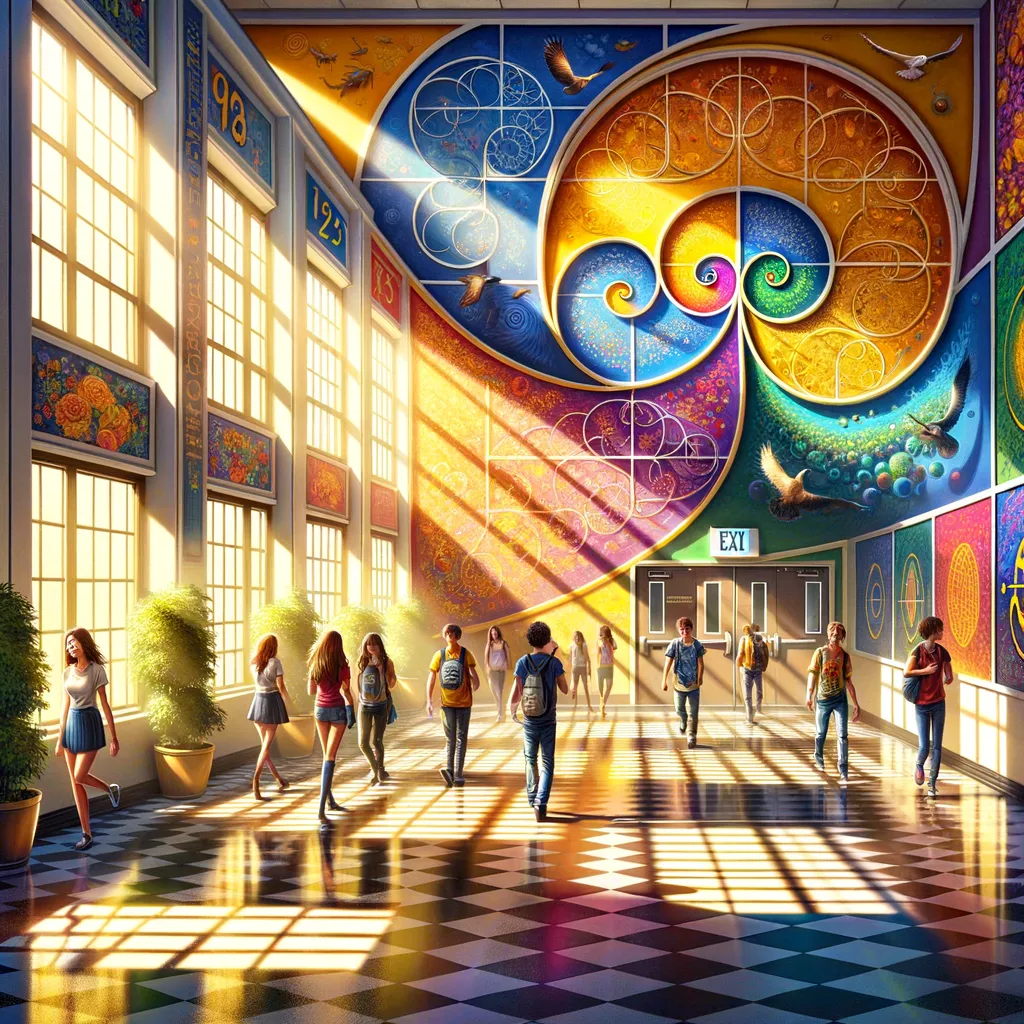Unlocking Math’s Hidden Wonders: A Journey of Discovery
Wandering through the familiar yet distant halls of high school, a lingering sense of change hung in the air, hinting at an unexpected transformation to come. Once a captive to the tyranny of numbers, the narrator’s relationship with mathematics began to shift dramatically upon discovering the mesmerizing Fibonacci sequence, revealing a hidden beauty woven into the fabric of existence. With each exploration, math morphed from a daunting obstacle into a symphony of creativity, bridging the realms of art, nature, and even human emotion. As the echoes of Pythagoras’s teachings illuminated paths previously shrouded in misunderstanding, a profound realization emerged: our deepest fears often conceal the most rewarding revelations. This journey beckons us to embrace the subjects we resist, urging us to unearth the hidden passions waiting patiently in the shadows of our lives, ready to ignite our curiosity and wonder.
In the memory of November 2, 2011, I found myself wandering through the musty halls of my high school, the echoes of lockers slamming and laughter fading into a distant hum. It was a day like any other, yet it held a peculiar weight, a whisper of change lingering in the air. I had just exited a classroom where the chalkboard was filled with formulas and the scent of dry erase markers hung heavy. Mathematics, that once insufferable subject, loomed large in my past, a labyrinth of numbers that seemed to mock my attempts at understanding. Yet, years later, I would discover an unexpected fascination that would transform my perspective entirely.
As I ventured deeper into the corridors of my mind, memories of sleepless nights spent poring over equations and grappling with the elusive concepts of algebra flooded back. I had always viewed math as a tyrant, an unyielding force that dictated my academic fate. The panic of a looming test felt like a storm cloud, dark and oppressive, shadowing my every thought. Yet, little did I know that the very tools I loathed would one day unlock a world brimming with elegance and wonder.
Fast forward to a crisp autumn evening, years after that fateful day in November, when I stumbled upon a documentary about the Fibonacci sequence. The visuals danced across the screen, spirals of sunflowers and seashells spiraling in a mesmerizing rhythm. It was as if the universe was revealing a hidden language, one that spoke of beauty and harmony. I was entranced. Suddenly, the numbers that had once sent shivers down my spine were no longer just symbols on a page; they were keys to understanding the very fabric of existence.
The more I delved into the world of mathematics, the more I began to see its intricate connections with art, nature, and even human emotion. Patterns emerged like whispers in the wind, guiding me through a landscape where math was not merely a subject but a symphony. Each theorem and proof became a note in a grand composition, resonating with the beauty of the cosmos. The once-feared formulas transformed into a dance of creativity, each step revealing new layers of insight and wonder.
Amidst this newfound appreciation, I discovered the story of Pythagoras, a figure draped in the mists of time, whose teachings extended beyond triangles and hypotenuses. He believed in the interconnectedness of all things, a philosophy that resonated deeply with my own explorations. This revelation ignited a spark within me, illuminating the path of discovery that lay before me. I began to view math not as an obstacle but as a bridge—a connection to the mysteries of life itself.
As I wandered further into this realm, the intricacies of mathematical theories unfolded like petals of a flower, revealing connections to music, architecture, and even the rhythms of the human heart. I found myself captivated by the golden ratio, a symbol of divine proportion that echoed through history, from the Parthenon to the paintings of the Renaissance. Each discovery was a breadcrumb, leading me deeper into a world I once dismissed, and with every step, my heart swelled with a sense of triumph over my past self.
Yet, as I reveled in this journey of enlightenment, I could not shake the nagging question: how many others languish in the shadows of their own misconceptions? What other treasures lay buried beneath layers of fear and misunderstanding, waiting for the right moment to burst forth into the light? The realization struck me like a bolt of lightning—our fears often mask the pathways to our greatest revelations.
With each layer of complexity I uncovered, I marveled at the unexpected nature of growth. It is a strange irony that the things we resist can hold the most profound lessons. My relationship with math had transformed, revealing not just a subject but a perspective—a lens through which to view the world as an intricate tapestry woven with threads of logic and creativity.
As I stood on the precipice of this realization, I couldn’t help but ponder the broader implications. What if we embraced the subjects and experiences we initially despise? What if we opened ourselves to the possibility that beneath the surface lies an uncharted territory of potential and wonder? In the end, it is not merely about numbers or formulas, but about the courage to confront our own biases and the willingness to explore the unknown. What hidden passions might await discovery in the corners of our own lives, waiting for us to take that first brave step into the realm of the unfamiliar?
Amidst the shadows of misconceptions lies a treasure trove of potential, waiting for the courageous heart to uncover the beauty hidden within the things once dismissed.



